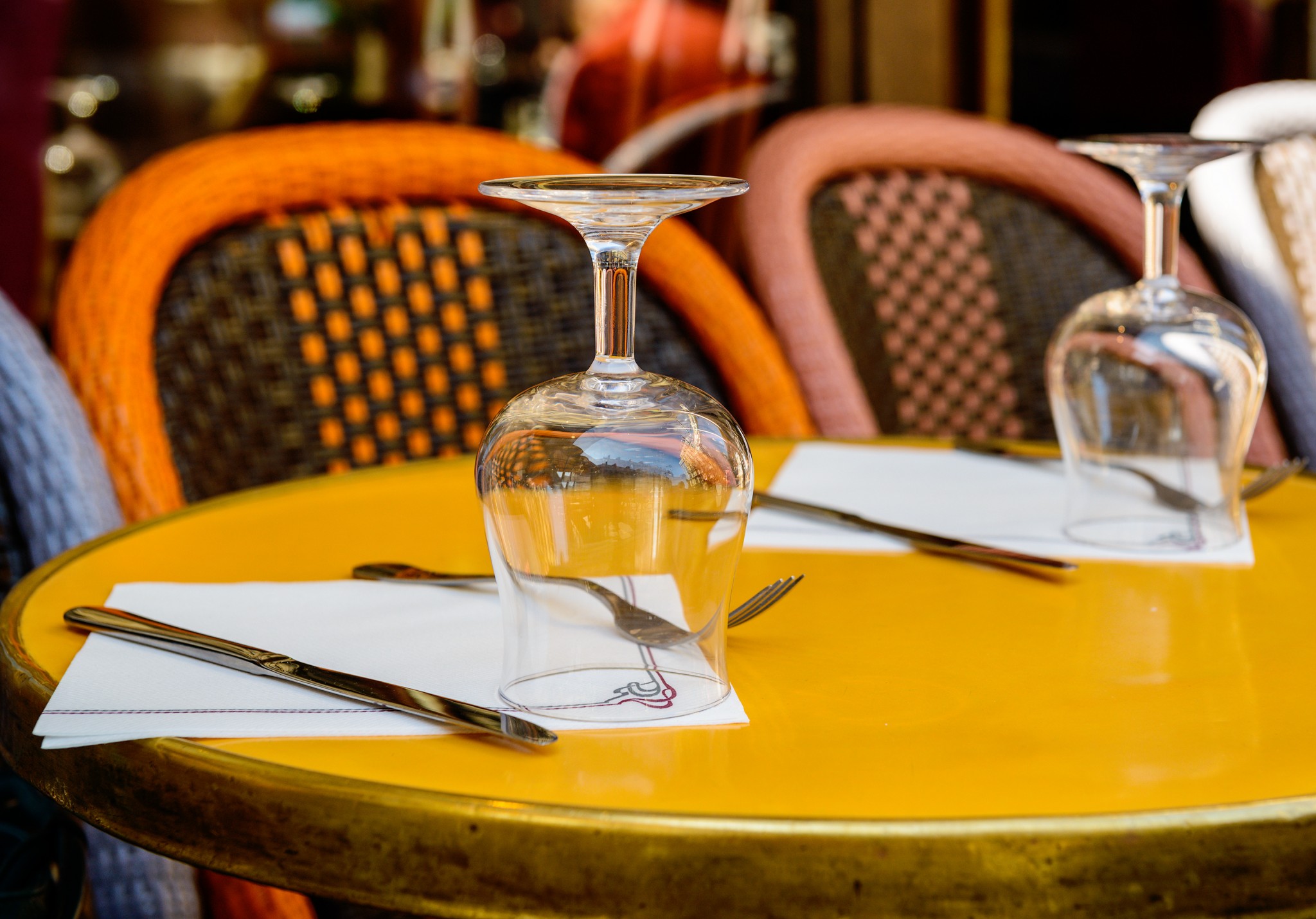During the 1980s, researchers concluded that we respond to loud, fast music by accelerating our chew rate from 3.83 bites a minute to 4.4. Based on just 11 people at a university cafeteria, the chew rate study was not statistically significant.
But it does take us to how our eating environment might affect us.
Turning the Tables
The results of another study with 40 men indicated that they drank more in less time when the sound at several bars increased from 72 to 88 decibels. Specifically, they moved from one drink every 14.51 minutes to one every 11.47 minutes. (They stopped at an average of 3.4 drinks.)
Also diminishing our eating and drinking time, a new NYC steak restaurant mostly has high top tables with no chairs. Out of 50 eating “spots,” just 10 have lower tables with chairs. The owner says that his faster turnover lets him charge less. So although people might not want to stand as they eat, the lower prices could offset the discomfort.
Further speeding the meal, a restaurant might first escort you to the bar. Ordering a bottle before sitting at your table, you won’t wind up pondering a wine list and a menu. Backless stools, no bread basket and cramped dining can also make us depart sooner. One NY restaurant uses communal appetizers composed of small bites to (subliminally) rush the course. Then they offer a free dessert at the bar to get people to leave.
Our Bottom Line: Competition
Competing in monopolistically competitive markets, restaurants have some price making capacity but probably not very much. As a result, facing many other establishments that are somewhat similar, they need to compete through non-price tactics. Yes, they try to make themselves unique through their food. But also, they can optimize their table turnover through behavioral nudges that could include making us chew faster.
 My sources and more: Fascinating reads, these recent WSJ articles, here and here, focus on table turnover. Less captivating, here, here and here you can ponder an academic look at restaurant psychology. And finally, in the middle, you might enjoy some CNN and Daily Beast analysis.
My sources and more: Fascinating reads, these recent WSJ articles, here and here, focus on table turnover. Less captivating, here, here and here you can ponder an academic look at restaurant psychology. And finally, in the middle, you might enjoy some CNN and Daily Beast analysis.






